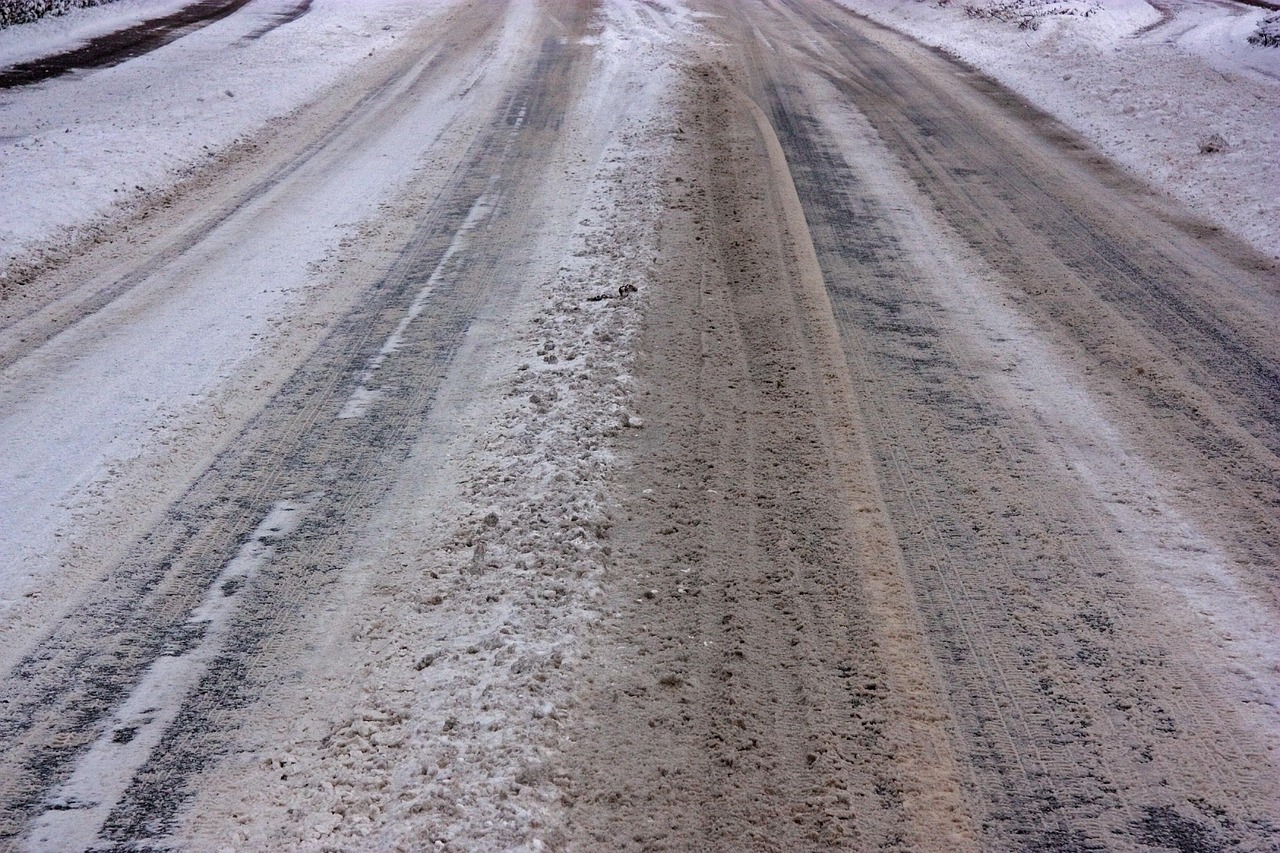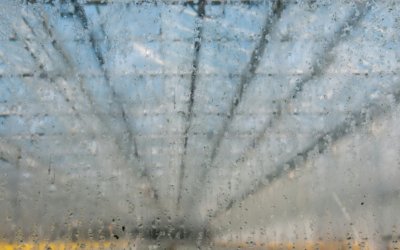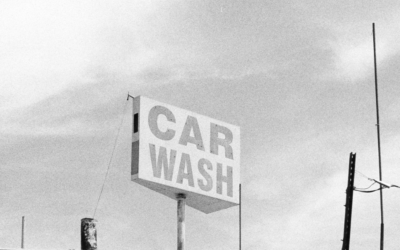Every winter, millions of tons of road salt get scattered across America’s roadways to keep drivers safe from ice and snow. While this white crystalline substance successfully prevents countless accidents by melting ice, it comes with a hidden cost that extends far beyond your wallet. Road salt doesn’t just disappear after winter ends—it clings to your vehicle, seeps into the environment, and creates lasting damage that many car owners discover too late.
Understanding what’s actually in road salt and how it affects your car can help you make informed decisions about vehicle protection during cold weather months. The composition of modern deicing materials has evolved significantly from simple table salt, incorporating various chemicals designed to work in extreme cold. However, these enhanced formulations often create more aggressive conditions for your car’s paint, metal components, and undercarriage.
The environmental and automotive impacts of road salt use have prompted many states to explore alternatives, yet traditional sodium chloride remains the primary weapon against icy roads. For car owners, this means developing strategies to protect their investment while navigating the reality of winter driving conditions.

Photo by Janke Laskowski on Unsplash
The Chemistry Behind Road Salt: More Than Just Sodium Chloride
Traditional road salt consists primarily of sodium chloride, the same compound found in table salt, though it’s typically mined as rock salt rather than refined for consumption. This basic form of road salt works by lowering the freezing point of water through a process called freezing point depression. When salt crystals dissolve in water, they create a solution that remains liquid at temperatures well below 32°F.
The Chemistry Behind Road Salt: More Than Just Calcium Chloride
However, sodium chloride has limitations in extreme cold conditions. Pure sodium chloride becomes less effective as temperatures drop below 20°F, prompting highway departments to incorporate additional chemicals into their ice melt solutions. Calcium chloride represents one of the most common additives, extending the effective temperature range down to approximately -25°F while generating heat as it dissolves.
Magnesium chloride has gained popularity in recent years as another road salt component. This compound works effectively in cold weather while theoretically causing less damage to concrete and vegetation than traditional sodium chloride. However, magnesium chloride still poses significant risks to vehicle surfaces and can be more corrosive to certain metals than standard rock salt.
Many road maintenance crews now use brine solutions rather than dry salt crystals. These pre-wetted applications allow for more precise coverage and can incorporate various additives depending on predicted weather conditions. Some regions experiment with organic additives like beet juice or molasses, which help the salt adhere to pavement surfaces while potentially reducing environmental impact.

Photo by Chait Goli on Pexels
How Road Salt Attacks Your Vehicle’s Paint and Metal
The destructive power of road salt extends far beyond simple surface contamination. When salt solutions come into contact with your car’s paint, they begin a complex chemical process that can permanently damage the protective coatings designed to preserve your vehicle’s appearance and structural integrity.
Salt crystals create microscopic scratches on paint surfaces as they’re carried by wind and road spray. These tiny abrasions provide entry points for moisture and additional salt, allowing the corrosive process to penetrate deeper into the paint system. Over time, this results in the formation of rust spots, paint bubbling, and eventual paint failure that requires expensive professional repair.
The undercarriage of your vehicle faces even more severe challenges from road salt exposure. Components like brake lines, fuel lines, and exhaust systems are constantly bathed in salt solutions during winter driving. The combination of salt, moisture, and road debris creates an ideal environment for accelerated corrosion that can compromise critical safety systems.
Modern vehicles incorporate various protective coatings and treatments to resist salt damage, but these measures have limitations. Factory-applied undercoating can wear away over time, especially in areas where debris impact is common. Once the protective barrier is compromised, salt solutions can reach bare metal surfaces and begin the corrosion process that leads to structural weakness and costly annual repairs.
Aluminum components, while generally more resistant to corrosion than steel, can still suffer from salt damage. The galvanic corrosion that occurs when different metals are in contact with salt solutions can accelerate the deterioration of mixed-metal assemblies common in modern vehicle construction.
Environmental Impact To Drinking Water: Beyond Vehicle Damage
Road salt use creates environmental consequences that extend far beyond individual vehicle damage. The large quantities of salt applied to roadways each winter eventually find their way into soil, groundwater, and surface water bodies, where they can permanently pollute ecosystems and threaten drinking water sources.
Chloride levels in many lakes and streams have risen dramatically in regions with heavy road salt use. These elevated chloride concentrations can harm aquatic plants and fish populations, disrupting food chains and reducing biodiversity. Unlike many pollutants, chloride doesn’t break down naturally in the environment, meaning the effects of road salt use accumulate over time.
Drinking water reservoirs in states like New Hampshire have shown concerning increases in chloride levels, particularly in areas with high road salt usage. Water treatment facilities struggle to remove chloride from drinking water, and the costs associated with addressing salt contamination ultimately get passed on to consumers.
Soil erosion represents another significant environmental impact of road salt use. High salt concentrations in soil can kill vegetation that would normally stabilize slopes and prevent erosion. This creates a cycle where more salt application leads to less natural protection, requiring even more deicing materials to maintain road safety.
The environmental costs of road salt extend to wildlife as well. Deer and other animals are attracted to salt residue on roadways, increasing vehicle collisions and creating safety hazards for both animals and drivers. Salt accumulation in roadside vegetation can create toxic conditions that persist long after winter ends.
Alternative Deicing Methods: Innovation and Limitations
Recognition of road salt’s negative impacts has sparked innovation in deicing alternatives, though each option comes with its own advantages and limitations. Sand represents the oldest alternative to salt, providing traction without chemical ice melting. However, sand requires cleanup efforts and can contribute to air quality problems while offering no actual ice melting capability.
Pickle juice has gained attention as an eco-friendly pre-treatment option for roadways. The brine solution from pickle production contains salt but in lower concentrations than traditional road salt applications. Some municipalities report success using pickle juice to pre-treat roads before snow events, though availability and cost considerations limit widespread adoption.
Innovative solutions incorporating organic materials like beet juice show promise for reducing environmental impact while maintaining effectiveness. These bio-based additives help traditional salt adhere better to pavement surfaces, potentially reducing the total amount of salt needed for effective deicing. However, organic additives can be expensive and may not be readily available in all regions.
Anti-icing strategies focus on preventing ice formation rather than melting existing ice. These approaches typically involve applying liquid deicing solutions before storm events, creating a barrier that prevents snow and ice from bonding to pavement surfaces. While potentially more effective than traditional salt applications, anti-icing requires sophisticated timing and weather prediction capabilities.
Some regions experiment with heated pavement systems or other technological solutions to eliminate the need for chemical deicing entirely. These approaches can be effective but require substantial infrastructure investment that may not be practical for widespread implementation.
Protecting Your Vehicle: Practical Prevention Strategies
Understanding the threats posed by road salt empowers car owners to take proactive steps to protect their vehicles during winter months. Regular washing represents the most fundamental protection strategy, though the timing and technique of winter car washing require special consideration.
Washing your vehicle immediately after exposure to road salt provides the best protection against long-term damage. However, washing in freezing temperatures presents challenges, making professional car wash services like Fusion Car Wash valuable allies in the fight against salt damage. Professional facilities have the equipment and heated environments necessary to effectively remove salt residue even in cold weather conditions.
Underbody washing deserves special attention during winter months, as this area faces the most severe salt exposure. Many car owners focus on visible paint surfaces while neglecting the undercarriage where the most serious damage occurs. Professional car wash services often provide specialized underbody wash options designed to reach areas that are difficult to clean with standard washing methods.
Applying protective wax or ceramic coatings before winter weather begins creates a barrier between road salt and your vehicle’s paint. These protective treatments make it more difficult for salt to adhere to surfaces and easier to remove during washing. However, protective coatings require reapplication throughout the winter season to maintain effectiveness.
Snow tires not only improve winter driving safety but can also reduce the amount of salt spray that reaches your vehicle’s body panels. The improved traction provided by snow tires can reduce wheel spin and the resulting spray of salt solutions onto your car’s undercarriage and lower body panels.
The Economics of Salt Damage: Understanding Long-Term Costs
The true cost of road salt extends far beyond the immediate expense of winter road maintenance. Vehicle owners face substantial long-term costs from salt-related damage that can significantly impact the total cost of vehicle ownership.
Paint repair and restoration services can cost thousands of dollars once salt damage reaches advanced stages. What begins as minor surface contamination can progress to rust formation, paint bubbling, and eventual paint system failure requiring complete refinishing of affected areas. These repairs often exceed the value of older vehicles, forcing owners to choose between expensive restoration and vehicle replacement.
Structural damage from salt corrosion can compromise vehicle safety and create liability concerns. Brake line failure, exhaust system deterioration, and frame damage represent serious safety risks that can result in accidents or costly emergency repairs. The annual repairs required to address salt damage often catch vehicle owners unprepared, creating unexpected financial burdens.
Resale value suffers significantly when vehicles show signs of salt damage. Used car buyers increasingly recognize the signs of salt exposure and adjust their offers accordingly. Vehicles with visible salt damage or documented history of winter driving in high-salt areas may face substantial depreciation beyond normal wear and tear.
The hidden costs of salt damage include increased insurance claims, reduced vehicle reliability, and the inconvenience of more frequent repairs. Many vehicle owners don’t recognize these costs as being related to road salt exposure, instead attributing them to normal aging or poor vehicle quality.
Regional Variations: Why Location Matters
Road salt use varies dramatically across different regions, creating substantial differences in the risks faced by vehicle owners. Coastal areas may use less road salt due to milder winter temperatures, but face increased corrosion risks from natural salt exposure in ocean environments.
Northern states like New Hampshire typically use substantially more road salt per mile of roadway than southern regions, creating more aggressive conditions for vehicles. The combination of longer winter seasons, more frequent freeze-thaw cycles, and heavier salt application rates creates a perfect storm for accelerated vehicle deterioration.
Many states have begun implementing road salt reduction strategies to address environmental concerns, but these efforts often take years to show measurable results. Vehicle owners in these transitional areas may face continued high salt exposure while environmental benefits slowly develop over time.
Urban areas typically see heavier salt application rates than rural regions due to higher traffic volumes and safety requirements. City driving exposes vehicles to more salt spray from other vehicles, while rural drivers may encounter less frequent but more concentrated salt exposure from recent applications.
Understanding regional salt use patterns can help vehicle owners make informed decisions about protective measures, washing frequency, and even vehicle selection. Some manufacturers offer enhanced corrosion protection packages specifically designed for high-salt environments.
Future Generations: Long-Term Environmental Consequences
The cumulative effects of decades of road salt use continue to unfold, with some consequences becoming apparent only after years of environmental exposure. Water sources that seemed unaffected by salt use are now showing elevated chloride levels as salt gradually moves through soil and groundwater systems.
Future generations will inherit the environmental legacy of current road salt practices, including contaminated drinking water sources, degraded ecosystems, and the infrastructure costs associated with addressing salt-related damage. The true environmental cost of road salt may not be fully understood for many more years.
Technological advancement offers hope for reducing the environmental and automotive impacts of winter road maintenance. Improved weather prediction, more efficient application methods, and development of less harmful deicing alternatives could significantly reduce the negative consequences of keeping roads safe in winter conditions.
The automotive industry continues to develop better protective coatings and corrosion-resistant materials, potentially reducing the vehicle damage associated with road salt exposure. However, these improvements typically apply to newer vehicles, leaving older cars vulnerable to salt damage.

“road-salt-snow-melting-on-street” by MN Pollution Control Agency is licensed under CC BY-NC 2.0
Car Products to Fight Road Salt Damage
To protect your car from the harmful effects of road salt, it’s essential to invest in high-quality products designed for cleaning, protecting, and maintaining your vehicle. Below is a list of 7 top car products and trusted brands to help minimize salt damage, along with links to purchase them directly:
This protective spray is excellent for shielding the undercarriage from moisture and salt damage, creating a durable barrier.
Chemical Guys Snow Foam Auto Wash
A pH-balanced soap that’s perfect for removing road salt residue while being safe for your car’s paint. Ideal for regular washes in winter.
3M Professional Grade Rubberized Undercoating
A high-quality undercoating product that offers rust-proofing and long-lasting protection against road salt and debris.
An easy-to-apply spray wax that adds an extra layer of protection to your car’s paint, guarding against salt corrosion and grime.
Designed specifically for wheels, this cleaner helps remove the stubborn salt and grime that accumulate during winter months.
A versatile product that effectively dissolves and removes salt from your car’s exterior, undercarriage, and other hard-to-reach areas.
Salt can wreak havoc on your tires, but this product provides a glossy, protective coating to reduce wear and tear during winter.
Using these products regularly during the winter months can extend your vehicle’s lifespan and maintain its appearance despite the harsh conditions caused by road salt.
Taking Action: Your Next Steps
Protection against road salt damage requires a proactive approach that combines understanding, prevention, and prompt action when exposure occurs. Regular professional washing during winter months represents the most effective strategy for most vehicle owners, particularly when combined with protective treatments and careful attention to high-risk areas.

Fusion Car Wash Has Your Back!
Fusion Car Wash offers specialized services designed to address the unique challenges of winter vehicle care, including heated facilities that allow effective cleaning even in freezing temperatures. Their underbody wash services specifically target the areas most vulnerable to salt damage, providing protection that’s difficult to achieve with home washing methods.
Consider your individual circumstances when developing a salt protection strategy. Factors like vehicle age, planned ownership duration, regional salt use patterns, budget constraints all influence the optimal approach to protecting your investment.
The battle against road salt damage requires ongoing vigilance throughout the winter season and beyond. Spring cleaning becomes particularly important as accumulated salt residue needs thorough removal before warm weather accelerates the corrosion process. Professional services can provide the deep cleaning necessary to remove winter’s accumulation of harmful contaminants.




